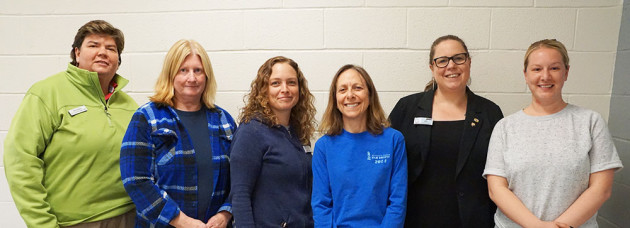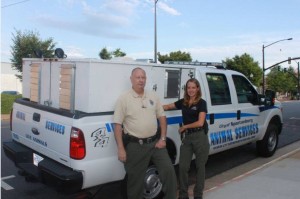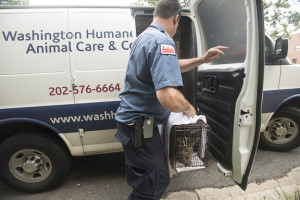In our “From the Field” series we share reflections and field notes from our staff members who work hands-on, every day, to protect and improve the lives of cats.
Hi there!
 I’m Alice Burton, and I’d like to introduce myself as a new member of the Alley Cat Allies staff. I’m excited to serve as the Animal Control and Shelter Liaison, helping reach out to animal control officers and shelters to talk about Trap-Neuter-Return (TNR) and what a positive impact it can make for communities and, of course, for the cats.
I’m Alice Burton, and I’d like to introduce myself as a new member of the Alley Cat Allies staff. I’m excited to serve as the Animal Control and Shelter Liaison, helping reach out to animal control officers and shelters to talk about Trap-Neuter-Return (TNR) and what a positive impact it can make for communities and, of course, for the cats.
I began my career as an animal control officer at the Animal Welfare League of Arlington in 2002, and became Chief Animal Control Officer in 2005. In 2010, the shelter implemented a TNR program for the first time. I was a skeptic, but within six months I was a true believer. Community cats were leaving the shelter alive, able to return to their outdoor homes were they thrived. But it didn’t end there: cat-related nuisance calls dramatically decreased, allowing us officers to focus our attention on more pressing matters in the community. I soon began speaking at public conferences and meetings, educating the public and fellow ACOs on the importance of TNR.
In my new role at Alley Cat Allies, my mission is to help animal control agencies and shelters implement TNR, and to reach their communities through education and valuable resources.

Me and Kayla of Alley Cat Allies, meeting with our partners in Harford County, MD just last week.
In honor of National Animal Care and Control Appreciation Week, I would like to spotlight three progressive animal control agencies that are not only embracing humane policies, but are wonderful examples of bringing communities together through TNR. I hope you will also take the time to thank the animal control officers in your community who are doing great work protecting cats.
Mike Johnson – Spartanburg Animal Services – Spartanburg, South Carolina

Photo courtesy of Spartanburg Animal Services.
Spartanburg Animal Services Team Leader Mike Johnson and his department began their lifesaving TNR program in 2013. Since then, they have spayed and neutered, vaccinated, and returned an impressive 1283 outdoor cats! When asked about the positive impact of TNR on the community and his department, Officer Johnson said, “our calls for service for cat related problems continue to decrease, which we believe to be a direct result of the TNR program.” Officer Johnson and Animal Services Officer Jessica Burdine are determined to continue their success and save more cats. Their goal is to do TNR for another 200 cats in 2016!
Scott Giacoppo – Washington Humane Society – Washington, DC

Photo courtesy of Washington Humane Society.
Since 2008, the Animal Care and Control team for the Washington Humane Society (WHS) has been active with TNR efforts throughout D.C. The WHS Animal Control team does TNR for over 2000 cats a year, and officers work with the community to continue helping cats! Officers assist community members with responsible colony care and conflict resolution, and help residents monitor the cats for their long-term wellbeing. “Having the officers directly involved in TNR gives us the ability to save more lives than we ever could in the past,” said Scott Giacoppo, Chief Animal Control Officer for WHS. “We used to have to euthanize healthy feral cats, but now we’re able to work with the community to get these cats back where they belong.”
Jon Cicirelli – San Jose Animal Care and Services – San Jose, California
Jon Cicirelli has worked in animal control since 1994, and has been the Director of San Jose Animal Care and Services in California since 2003. Since they implemented a TNR program, Cicirelli and his team have reduced cat and kitten shelter intake by 25% over the last three years. “We use TNR as a humane alternative to the more traditional approach of trap and euthanize,” said Cicerilli. “Our focus is on reducing the number of cats being born in the community, which will reduce the number of cats in the shelter.”
We’ll keep working with ACOs around the nation to help them make lifesaving change. Til next time,


